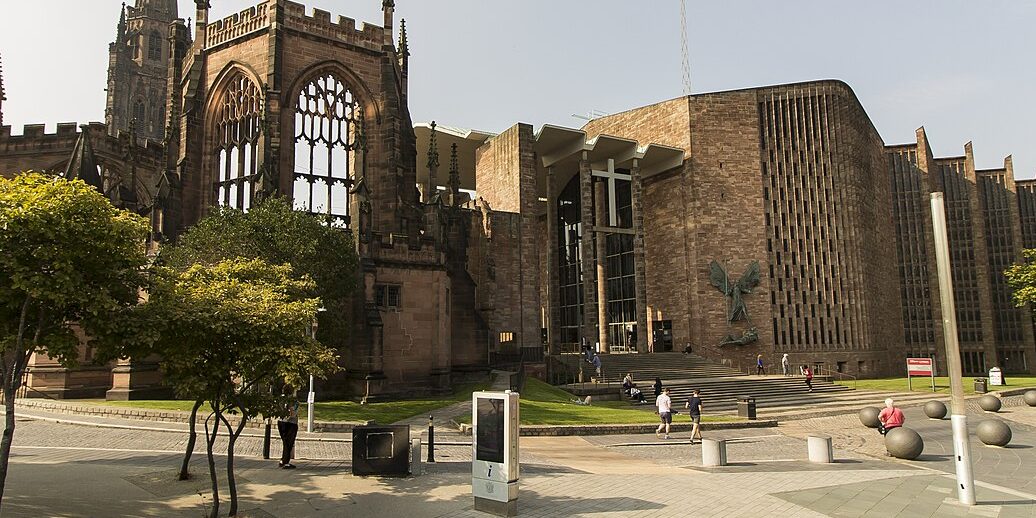Should we send Coventry to Coventry?
The famous phrase ‘send to Coventry’ means to ignore and ostracise someone as punishment. It likely originates from the English Civil War, when many Royalist captives were held prisoner in the infamous Parliamentarian stronghold of Coventry.
Over the years, this saying has been reinforced by the popular opinion that Coventry is one of the UK’s worst and most dangerous urban areas. Rated as the second-most dangerous city in Europe in 2022 and the UK’s 17th worst place to live in 2023, it’s clear that the public opinion of Coventry isn’t glowing. But is this truly justified?
A significant proportion of Warwick students decide to avoid living in Coventry and instead opt for life in Leamington Spa. Geographically, Leamington town centre is around three times as far from campus as Coventry city centre, and the dreaded Leamington buses take far longer. It is easy to understand why students in Leamington may struggle to identify with Coventry, especially when they live so far from the city and rarely, if ever, visit.
Those who do opt to live in Coventry, usually Canley or Earlsdon, rarely admit it with pride. Moreover, visiting the city itself means navigating a concrete jungle of brutalist architecture, the result of a hurried rebuild after the city was effectively destroyed in the Second World War. Additionally, despite being situated on its outskirts, the University of Warwick has a history of looking down on Coventry, often trying to distance itself from it, despite its proximity.
I believe that to claim Warwick has no links to Coventry ignores a significant aspect of our university’s history
Recently, the University administration has been pushing our cultural links to Coventry, notably as part of the latest overhaul of Warwick’s brand. The new logo features an elephant, a symbol strongly associated with Coventry, possibly originating from its historical links to Christianity and the myth of St George.
Additionally, one of two potential designs for a recently proposed on-campus mural by David Speed featured a depiction of Lady Godiva on horseback, reflecting Coventry’s most well-known myth – a statue of which stands in the centre of Broadgate in the city centre. Does Warwick really have these cultural links to the city, or is the University emphasising connections that simply do not exist?
I believe that to claim that Warwick has no links to Coventry ignores a significant aspect of our university’s history. The physical site for the University was granted by both Coventry City Council and Warwickshire County Council, and to this day, it overlaps the border between Warwickshire and the West Midlands. Graduations were originally held in the centre of Coventry at the cathedral, one of the city’s most iconic buildings, before moving to the Arts Centre in the 1990s.
Looking beyond the concrete skyscrapers of Coventry’s centre reveals an ancient settlement featuring many surviving, historic landmarks, such as Lunt Roman Fort or the old cathedral
Many on-campus accommodations are named after locations in Coventry, such as Tocil Wood or the River Sherbourne. Although we may not realise it, many elements of the University are linked to or named after events from Coventry’s millennia of rich and varied history. A history that stems from its founding in 1043 by the Earl of Mercia, to its key role in the English Civil War and the Industrial Revolution, to devastation in the Coventry Blitz in 1940, and its subsequent reconstruction into the city that stands today.
Looking beyond the concrete skyscrapers of Coventry’s centre reveals an ancient settlement featuring many surviving, historic landmarks, such as Lunt Roman Fort or the old Cathedral. These now form part of this modern city composed of countless different traditions, which was designated the UK’s City of Culture in 2021.
Much of my family comes from Coventry, so I was a frequent visitor to the city long before attending university. For all its flaws, it has always been a special place for me. I have fond memories of trips into town as a young child, standing in Broadgate, waiting for the Lady Godiva clock to strike 12 so we could watch the Peeping Tom appear!
Given my history with the city and my current residence in Coventry as a student, I am well aware that my assessment may be skewed in its favour. Nonetheless, I would argue that Warwick is more closely linked to Coventry, a city with some of the region’s greatest history and culture, than many Warwick students would realise. Perhaps the University’s recent emphasis on its cultural links to Coventry should prompt some of us to give the city a chance, and maybe one day decide to take the 12X instead of the U1.

Comments (2)
Excellent article. Very well researched. I too am very fond of Coventry!
Lol